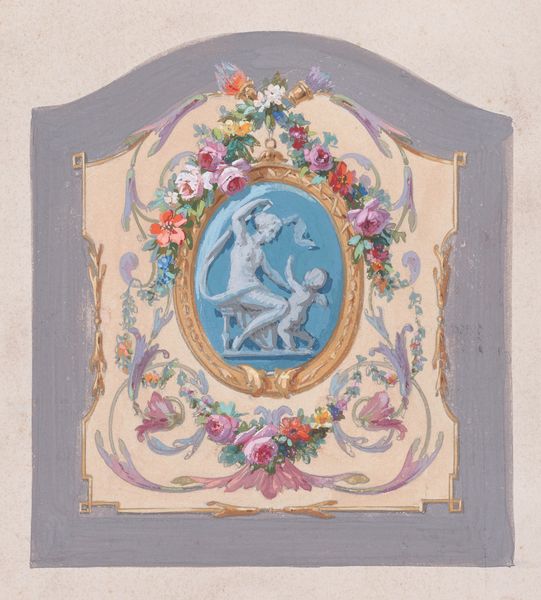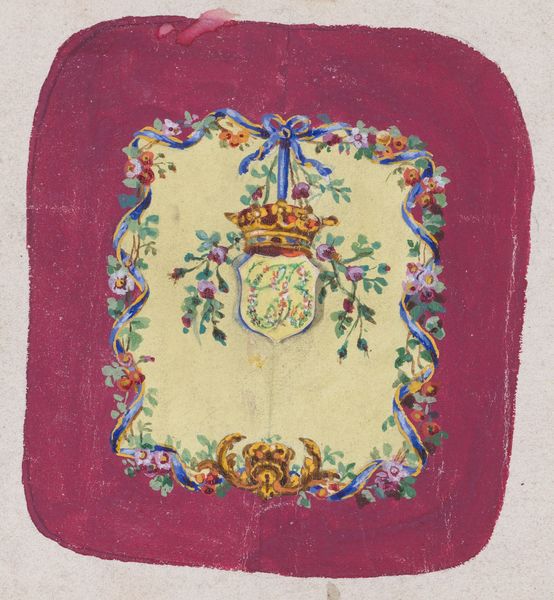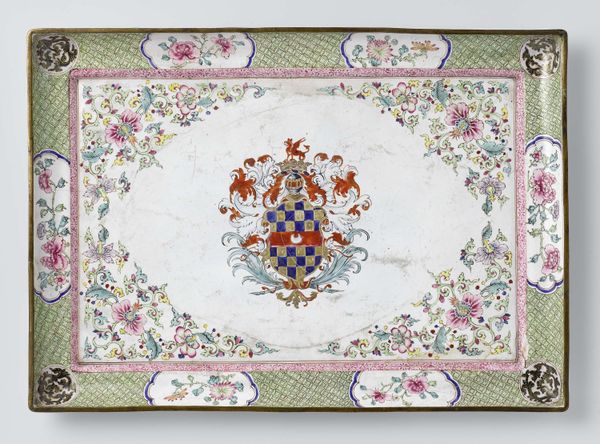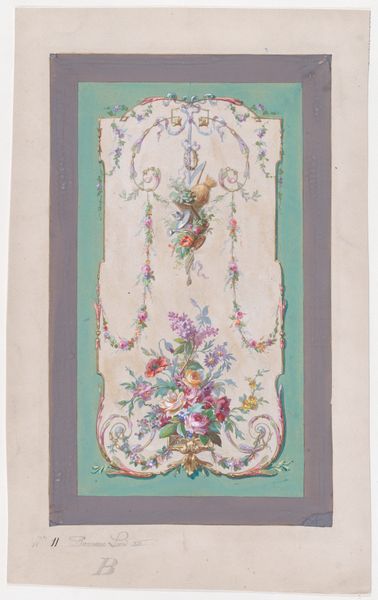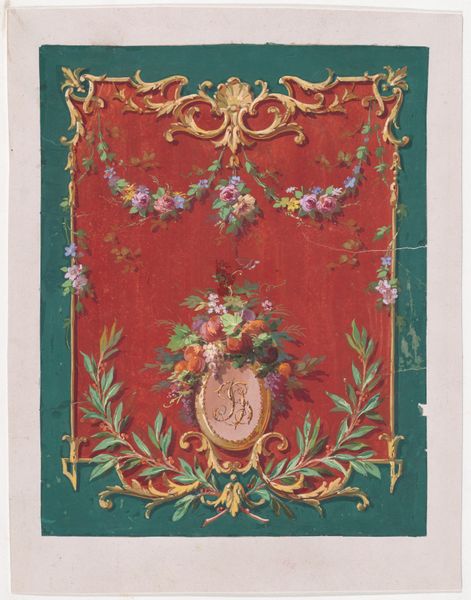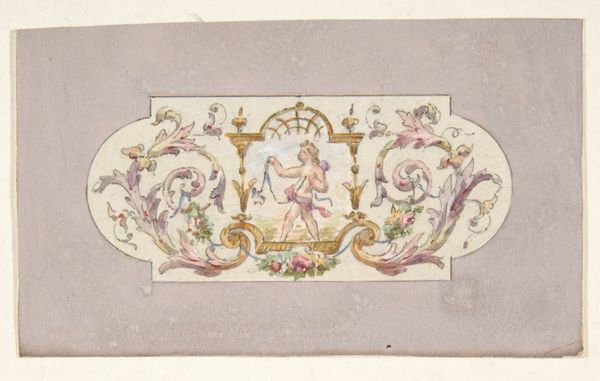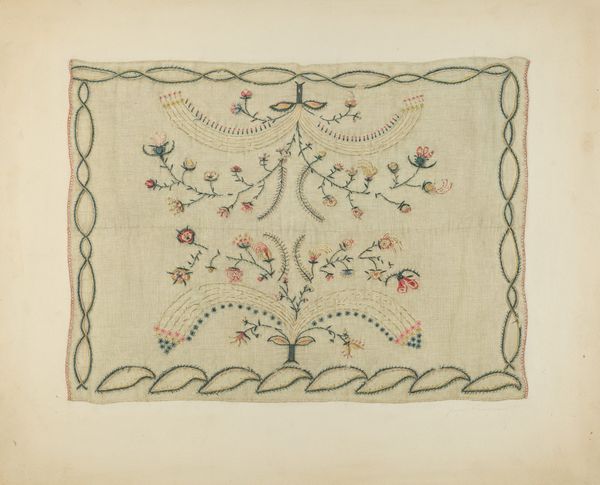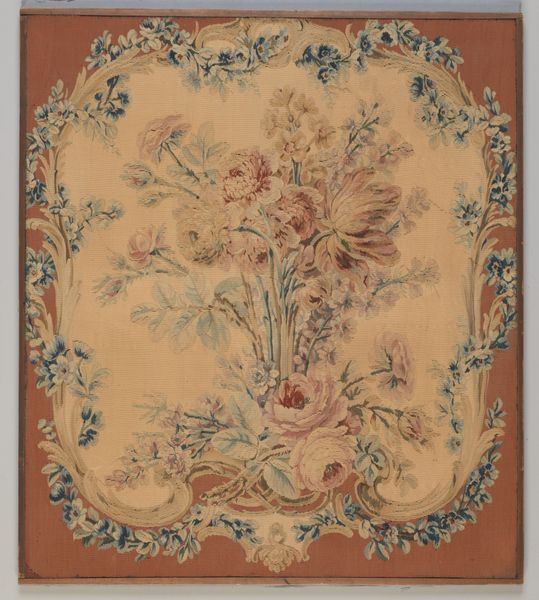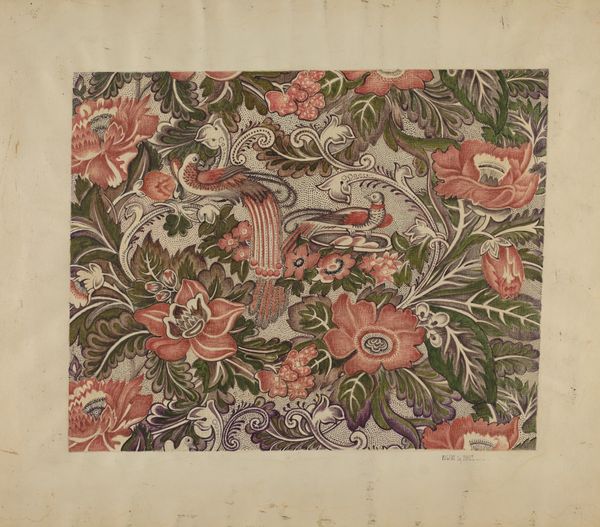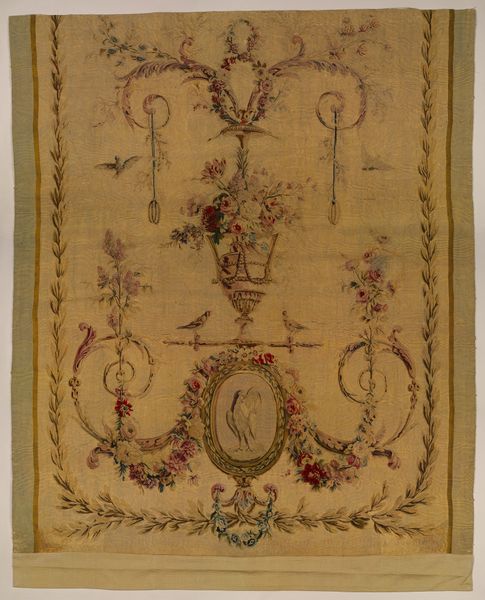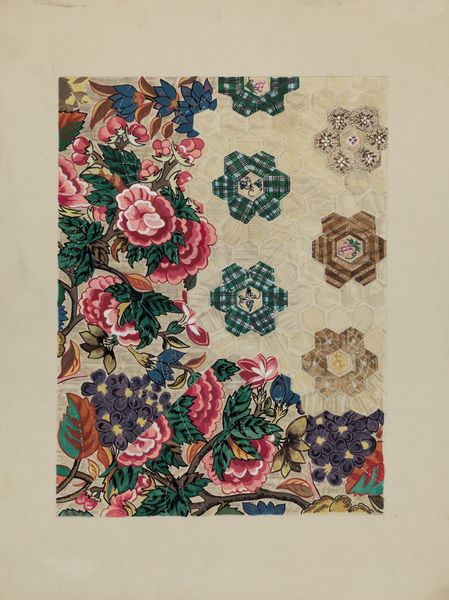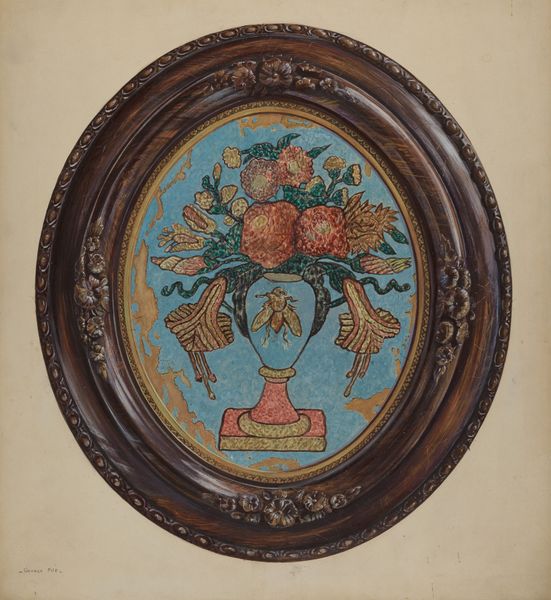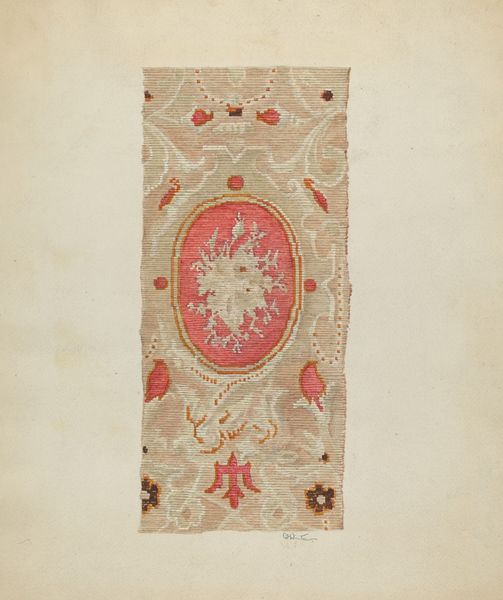
Dimensions: 5 9/16 x 5 11/16 in. (14.2 x 14.5 cm)
Copyright: Public Domain
Curator: Take a look at this delightful watercolour design for a chair seat cover, dating back to around 1850-1870. It's currently housed here at The Metropolitan Museum of Art. Editor: My immediate impression is of pastel elegance. The curvilinear forms give a certain softness, while the gold trim adds a certain decadence. It feels quite refined, and somehow quite French. Curator: Precisely! The unknown designer worked during a period of intense focus on interior decoration, reflecting the burgeoning middle class and their aspirations for a more luxurious lifestyle. The materials, likely relatively inexpensive prints enhanced with watercolour, point to a broader consumer base for these goods. Editor: Looking at the composition, I'm struck by how the artist has used framing—first with the light blue and gold ornamentation, and then again with the darker teal border. The central bouquet provides a naturalistic counterpoint to the geometry surrounding it. Do you see this contrast too? Curator: Absolutely. And I think the use of watercolours allowed for a certain fluidity and blending of colours, which lends a romantic quality. Considering that the labour for crafting such designs was often divided amongst workshops, how do you see that possibly influencing the aesthetic? Editor: An interesting thought! Perhaps this kind of modular design, easy to replicate in stages, suited the division of labour in workshops. I am intrigued by the choice to frame a naturalistic motif in such geometrical forms – there seems to be a deliberate taming, ordering, even stylising of the natural world on display here. Curator: I agree. By producing something deemed desirable and ornamental, design, in this way, also helps solidify a particular social standing, offering a means of access and participation to broader markets and consumption of commodities. Editor: And, of course, if one focuses too closely on the individual flower or golden swirl, we can easily overlook how those individual details only cohere through a careful balancing of structure. It’s a striking piece of artwork to consider, and how it encapsulates its particular social climate within. Curator: Indeed! This design not only illustrates prevailing aesthetic tastes, but provides insights into the workings of production, labor, and societal desires of that time. Thank you for a perspective that really illuminates this decorative beauty.
Comments
No comments
Be the first to comment and join the conversation on the ultimate creative platform.
